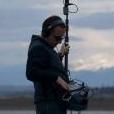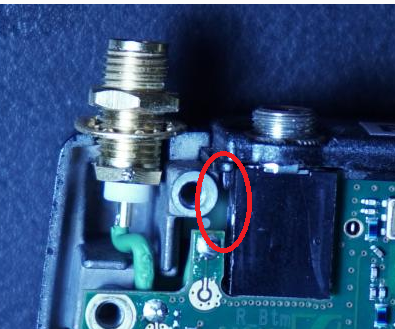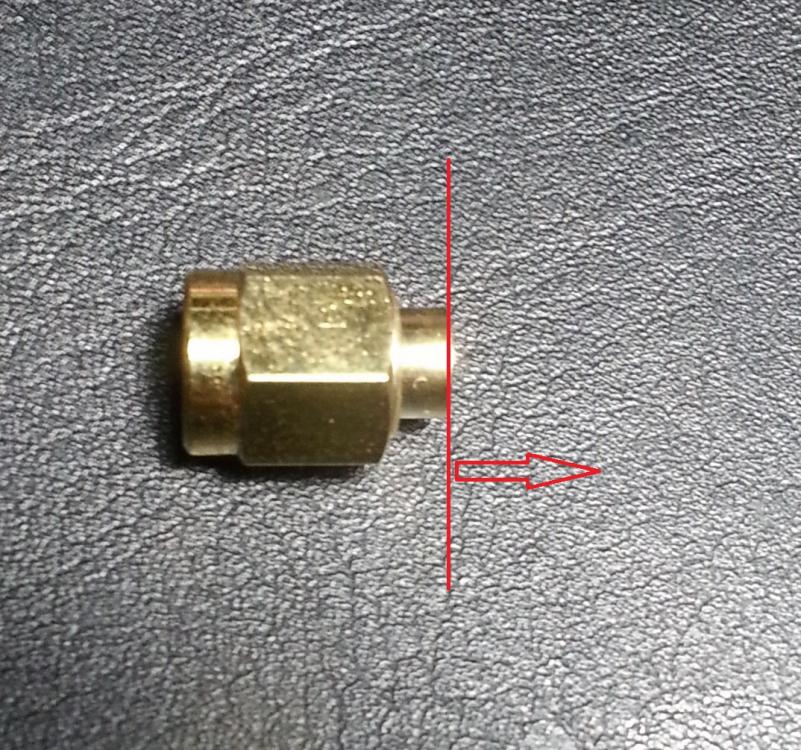
sisal
Members-
Posts
12 -
Joined
-
Last visited
-
Yes you must remove the latch connecting to the minijack. The default setup uses the connected audio cable's sleve/shielding as the diversity antenna. If you leave the latch connected, and for example connect an LPDA, you destroy the antenna's anatomy by leaving the audio jack connected, you basically tap in between two antennae (one of which is slightly suboptimal by design). The original whip does not need a ground connector, since it is not set off the device. The device itself is acting as the ground plane to the whip. The "antenna" starts where the signal-carrying wire leaves the shielding. With the original whip antenna, this is where it exits the device case. If you intend to use a remote antenna (dipole, LPDA, helix or whatever), you must carry the ground plane to the antenna, therefore connecting it to the device case. No, the audio cable's sleeve is the second antenna, the device case is the ground plane. The Sennheiser G2/G3 do not use "true diversity", they do not intermix the antenna signal. That's a feature for the more expensive units. The G2/G3 just switch between the two antenna inputs when the Signal drops below a preset threshold. You cannot get any kind of antenna polarity issue on this device. Btw, you should see that the latch is missing here: Kindly, sisal
-
I made some battery eliminators myself as well, I got empty AA placeholders from here: https://www.fasttech.com/products/0/10001920/1171900 They are made like real battery shells, i.e. the tip is isolated from the shaft, but they have a spot welded lug connecting the shaft with the tip - they can very easily be opened with a rotary tool, just rip out the lug and connect your own wires. I was surprised how easy soldering was, i expected it to be aluminium that needs a little agressive flux and some effort, but standard electronic soldering tin stuck right away. I rubbed it in anyways just to be sure You only need to work one, the second one can go in unmodified. For the first one I made, I cut open and soldered two placeholders together, and put a DC buck converter and a linear voltage regulator in it. As I tested the second one without voltage regulator, it turned out that for what I do the twenty-something dB RF attenuation the voltage regulator adds is not as important as battery efficiency. So the approach of having 4 of what I guess vidman used: https://www.fasttech.com/products/0/10002934/1219200 is not as bad as it seems. They are cheap, but if you put more than 1A on them they get pretty hot. So if you have more than 500mA load, just add some more and they stay cool...
-
I go with the Nyrius Aries Pro It's on 5.8GHz, and absolutely delay free (they claim 2ms). When I tested the delay with my notebook, I ended up having more delay on the built in screen than the nyrius and projector together. They are a bit messy frequency wise, you wouldnt be able to use two of them at the same time if you need more than 15ft range. The claim of 160ft is easily reached with clear sight and one unit in operation. They also do some error correction if the signal gets low, but as its 5.8GHz it doesnt take much to attenuate the signal. I bought 3 of them a while back, I think they were around $250 each back then.
-
You start to measure where the antenna exits the shielding: The original Sennheiser whips are not cut to the optimal length. They include the same antenna regardless of what block that device operates on. That may be why it works better with replacement whips..
-
I did the same about a year ago and I am very happy with it. Using proper SMA whips with G3 gives me a lot more range. Now I get the first hits where previously the connection would already have dropped completely. The receiver switches antennae seamlessly, and I get equal level on both of them. For the first set I used connectors from RS: http://au.rs-online.com/web/p/sma-connectors/5120036/ To mod the rest of my sets I ordered some cheaper connectors from ebay (like these). I cannot make out any difference. Do not forget to connect ground for the second antenna. Other than the hole for the second antenna, there was absolutely no change to the case. Should I ever feel like reverting to original, its just popping the SMA out and the regular one in. Using these connectors, you would have to remove a tiny bit of material to fit the original antenna bay:
-
Hi Finally I got around to test my RF Multi SMA, that was lying around for over 6 Month now. At first, I was impressed. I was on a shoot in Alexandria Sydney, and got an almost perfect scan. I hooked it up to a PSC LPDA, and a Lectro SNA600. The noise floor went up a good bit, I had to adjust the squelsh on my receivers (test run without pilot tone). When the boom op walked off the LPDA, the receiver seamlessly switched to the SNA600, and 40 meters away not a single RF hit. At first it worked perfectly, but after maybe 30-45 minutes it started to introduce a static noise (example attached). I had 4 wireless mics deployed: 1: 596.4MHz 2: 597.5MHz 3: 599.4MHz 4: 601.05MHz The attached example is from Mic 1. When I tuned the receiver 1 to the frequency of 2, the noise was gone. Receiver 2 tuned to mic 1, noise would now be on receiver 2. Also tuned to rule out the tx by swapping freqs on two mics. When testing further, I discovered that the noise gets weaker towards the first sma connector on the Multi SMA, and gets stronger towards connector 8. Since I did'nt know if I could just change frequencies and run for the rest of the day, or would have to troubleshoot again after 20 minutes, I threw the antenna distributor in my case and screwed on whips (and had to move around a lot then). Does anyone know what could cause this issue? - Andy ZOOM0012_Tr1.WAV
-
Australia, quick question about wireless licenses
sisal replied to Karri's topic in General Discussion
Hey Karri, look out for those dropbears and wheelsnakes (they bite into their tail and roll down the hill to hunt you). But at least your wireless mics are covered by the LIPD class license (Low Interference Potential Devices).They just count on you to not disturbing anything legal too much, or the casual police officer (who appears to be equipped with rf trace utilities) will knock at your door. or at your shed. Or your cart, for that matter. Look it up, you will quickly find any requirements for LIPD. Sennheiser has a website that lists allowed frequencies and TV stations, just enter your postcode or address: http://www.frequencyfinder.com.au/ edit: I rely on you to be able to convert sennheisers bands to whatever lectro or zax block you need... -
I would love to see an android app.
-
Not sure about adaptor, but I got an idea for a suitable cart:
-
Hi Tim The issue with GPS trackeing is not that it is not powerfull enough to get a "pulse" out, but rather that it has to "see" the GPS satellites. A typical GPS satellite orbits about 20'000km above the earth's surface, getting you a typical -127.5dBm at the receiver in the open field, at 1.2 or 1.5GHz (according to wikipedia). Thats barely even signal at all. Today's tracker report their position to you over the mobile phone network. Phone coverage (aka the "pulse") may work while not having a GPS signal at all, or the other way around where you are way out in the field and have no mobile phone coverage the GPS signal typically is very strong ;-) Off the top of my head I know tracker.com offers a wide variety of tracking services, from the consumer products advertised on the website to law-enforcement ankle tracker to very sophisticated fleet solutions and cargo tracking. You can get an industrial Pico-Tracker for ship container tracking with external antennas that lasts for months. If you get a tracker.com pico tracker, mount it in the lid of a pelican and set it to report its position every 15 Minutes, you get it running for 2-4 Weeks depending on mobile network coverage. - Andy
-
Your experience with a gimbal stabilizer
sisal replied to jjohnson's topic in Cameras... love them, hate them
Hi Daniel I've been on a two day shoot with a dji ronin recently, and it was about the quietest thing we had on the set. I did not hear it at all, even when the cam op was showing off. The cam op walking around (what this gimbal is made for in the end) was a lot more audible. - Andy -
I think Sony's response to this depends on what the UWP-D series is aimed for, i.e. is this receiver equipped with a proper headphone driver? I don't own this unit. I own a few Sennheiser G3 which I regularly use as oneway coms. The EK 300 IEM is equipped with a headphone driver and a pot to adjust volume; if I need to use an EK 100 (intended to drive a prosumer line or mic input) for a headphone, I usually use it in conjunction with a headphone amplifier like FiiO Kilimanjaro 2 or Altronics K5508. - Andy

.png.279748a58a2b862b7aa5f3b84126e232.png)
(2)(1).thumb.jpg.14f77bde6921e3a5e30bb1c55964ade9.jpg)





